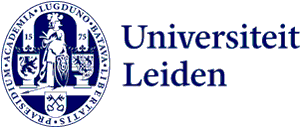
Censorship in cooperation: the representation of the Indonesian massacre in literature
How do you recount historic events if you are not allowed to talk about them? For his dissertation, Taufiq Hanafi tried to find out how a period of mass murder – despite heavy censorship – found a place in Indonesian literature. PhD defence 31 March.

In March of 1966, General Suharto comes to power in Indonesia. With his New Order regime follows a period of anti-Communist purge, during which, according to conservative estimates, between 500,000 and 1 million people were murdered. Although the massacre left deep wounds in Indonesian society, literature largely ignore the events that took place. ‘They were prohibited from speaking about these events’, Hanafi says, ‘unless you wrote about it in a way that pleased the state. And the regime had its own narrative of the events that happened.’
This might make it all the more striking that between 1977 and 1986 several books about the massacre were released. ‘Out of the three novels I discuss, two tend to be quite careful in recounting what happened. One of the authors calls it mlipir-mlipir , which means tiptoeing through the periphery. You are allowed to protest, but only without offending people, especially the state. But the third book tends to be far more blunt about what happened,’ Hanafi says. ‘I have tried to dig in this anomaly. Why were these popular novels not banned or censored?’
Gentlemen's agreement on censorship
Hanafi came to the Netherlands To answer this question. ‘Leiden is the Mecca of Indonesian study. The collection of sensitive books is much more complete in Leiden than in Indonesia.’ Hanafi had also read an interesting fact about the Netherlands shortly before he started his research: ‘It said that children from the Netherlands are the happiest in the world, so I thought it would be the ideal place to raise my son.’
While Hanafi's son attends primary school, his father uses a combination of archival research and close reading to delve into the novels and the socio-political circumstances in which they were written. ‘The New Order regime was very complex. It was authoritarian, but also had some sense of liberalism, for example in promoting ideas or literature. In February 1973 the president himself invited publishers, authors, and literary producers to the presidential palace. He told them if they wrote and produced good books, he would support them on basically all levels. He would cut taxes, give them printing machines, provide subsidies… It boosted the literary production, but the president never elaborated on the specific meaning of the term “good.” He probably assumed everybody would know you cannot speak about the ideas of communism, Leninism, Marxism, the ideologies that were prohibited in Indonesia.’
Literary parties can decide for themselves what can or cannot be said about sensitive subjects.
By not precisely laying down what may and may not be written, a kind of gentlemen’s agreement arises. Literary parties are not prescribed what they must censor word-for-word, and can decide for themselves what can or cannot be said about sensitive subjects. ‘There is a cooperation between state censors and literary producers,’ Hanafi states. Together they determine what is and what is not possible in Indonesia. Sometimes this leads to strict enforcement of ‘forbidden subjects,’ other times, like in the period between 1977 and 1987, the approach is more liberal and the emphasis lies on the production of ‘good books.’
Back to Indonesia
In the near future, Hanafi would like to elaborate on this interplay in a public edition of his dissertation. ‘I am going to translate for a project about decolonization I am involved in and try to find a publisher for my dissertation.’ Then it is time to return to Indonesia. ‘Perhaps I will go to academia there or open a few public libraries, based on my own collection.’
